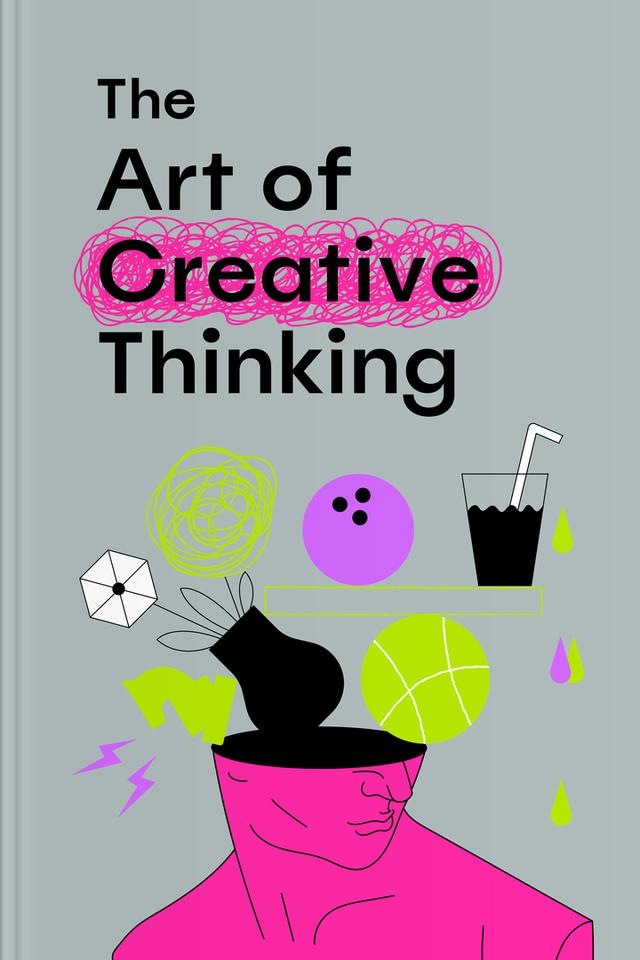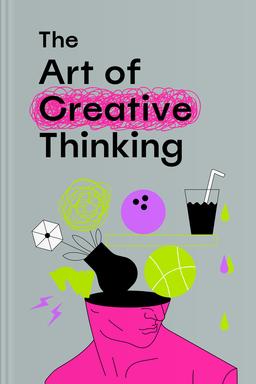You’ll learn
- How nature is a blueprint for fresh ideas
- To welcome creativity and innovation
- About the magic blend of discipline and creativity
- Ways to turn uncertainties into innovations
russia has launched a full-scale war in Ukraine. Donate to support Ukraine and protect the world’s peace.

first KEY POINT
Have you ever listened to a breathtaking song and wondered how it came to be? The core of creativity isn't crafting something from nothingness. It's the art of connecting different ideas that might seem far apart. And you take them from the richness of the world around you.Imagine this: an inventor is trying to solve a big problem, and they aren't happy with current solutions. But a lack of something is a perfect push for creation. Often, that urge to find something better leads to amazing new things. While doing that, they might learn from past creators or revisit their experiences.
Take a famous painting. It begins with just paint and canvas. But the true transformation happens in the mind when feelings and thoughts come together to birth something unique. Yet, the path of creativity has more to it than just getting new ideas. It's about challenging what you think you know. You can be a prisoner of your assumptions and the whispers of the masses, cloaked as common sense. But here's the thing about common sense: it evolves. What's the norm today might change tomorrow.So, do you want to stick only to the boundaries of the familiar? The thing is, it keeps you inside the box that becomes a cage holding you from your ideas and dreams. Unlocking your potential starts with breaking the walls of what you know. The power of imagination is vast; it can create endless possibilities if you let it bring you to new corners of your mind. Everyone has the same tools to invent new ideas. It is how you use and mix them that makes you stand out.To tap into this endless world of ideas, do more than dream — act, question, and most importantly, reimagine. So, let's dive deeper, embrace the chaos, face the unknown, and embark on this journey together to discover the heart of creativity. Get ready to challenge the limits of your thinking and redefine them. Are you in?
second KEY POINT
Have you ever thought about where new ideas come from? Look at the fantastic world around you. Nature can be your teacher when you want to find the spark for your next big idea. Imagine yourself in the shoes of an inventor for a moment. You hit a tough spot, and you can't figure it out. What do you do? You look at what already exists, and when you are about to give up, an idea pops into your head. Boom, you made a connection! You saw something in a way you hadn't before! Often, these sudden ideas come from the world of analogy. Nature is full of examples waiting for you to see them. Think of it as a puzzle game where you align a natural phenomenon with an innovation.Take, for example, how seagulls glide in the air. Their shape could inspire a new kind of airplane design. Or look at a spider's web: solid yet light. Could it help design better building materials? Bestselling author Rod Judkins suggests that human arm movements could help develop new machines imitating our range of motion. And cats — quick and quiet — might be the blueprint for a next-gen security system.It's not just nature. Notice how calm you feel looking at a statue. Could we make things that give people that same feeling of harmony and beauty? So, when developing new ideas, observe what's around you. Let your surroundings inspire you. Even the most common things can spark brilliant ideas. This way, creativity becomes an exciting adventure.You can be more creative by questioning what you know and seeing things differently. You might feel you know all about your family member or friend. But do you? We often don't go further than the surface. Try to see people differently or ask more questions, and you will see how much more there is to discover. It's like looking at the world as if you're seeing it for the first time. You might find surprises right in front of you.

Continue reading with Headway app
Continue readingfirst KEY POINT
second KEY POINT
third KEY POINT
fourth KEY POINT
fifth KEY POINT